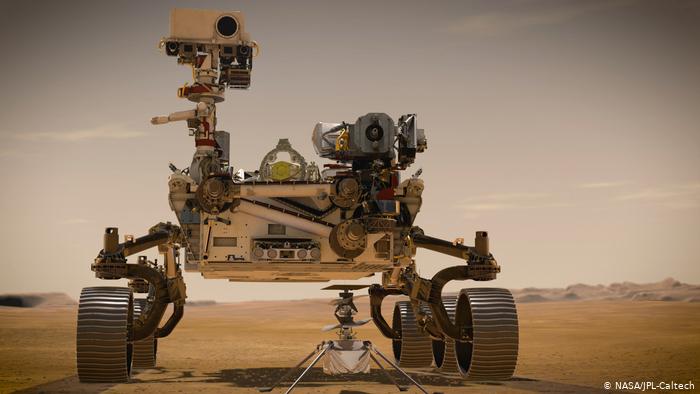Perseverance: New Era Of Future Exploration
Can you imagine that one day humanity will spread beyond our planet or in fact maybe beyond our galaxy? Humanity may discover and settle in more different and complex environments that support life as we know it. What many people have long considered to be impossible is now looking like the next mission. Looking at our current space exploration success, there is a hope that one day humanity will spread and be part of a multiplanetary system.
Our recent focus has gone to Mars (the red planet) which gets its name from its red appearance as red dust covers most of its surface. Mars is the 4th planet in our solar system and is 132.15 million miles away from the earth. It is just over half the diameter of the earth, and its mass is only 11 % of the earth’s mass. Mars have a very different atmosphere, temperature and geologic structure than earth. 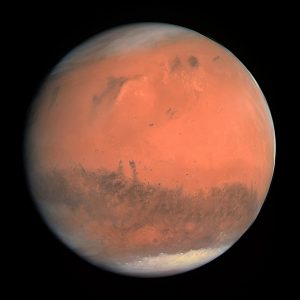 Its atmosphere consists of 95% carbon dioxide, 3% nitrogen, 1.6% argon, and it has traces of oxygen, carbon monoxide, water, methane, and other gases, along with a lot of dust. The average temperature on Mars is minus 80 degrees Fahrenheit, way below freezing point. It also has a rocky surface , with canyons, volcanoes, dry lake beds and craters all over it. All these factors make it very different for humans to land on mars. So NASA(National Aeronautics and Space Administration)has come up with a solution, by building complex and smart rovers.
Its atmosphere consists of 95% carbon dioxide, 3% nitrogen, 1.6% argon, and it has traces of oxygen, carbon monoxide, water, methane, and other gases, along with a lot of dust. The average temperature on Mars is minus 80 degrees Fahrenheit, way below freezing point. It also has a rocky surface , with canyons, volcanoes, dry lake beds and craters all over it. All these factors make it very different for humans to land on mars. So NASA(National Aeronautics and Space Administration)has come up with a solution, by building complex and smart rovers.
Perseverance
This is not the first time NASA is launching a rover to Mars. Previously NASA has sent 4 rovers to mars called Sojourner, Spirit, Opportunity and Curiosity. Perseverance will be the 5th rover to land on Mars. So far it’s the most advanced and complex rover NASA has landed on another planet. It took NASA 11 years and invested roughly around $2.75 billion US dollars in the project. Perseverance was launched on 30 July 2020 and traveled 7 months in space. Could you imagine traveling 7 months as a human through space to get to Mars? Some are dreaming of this possibility today.
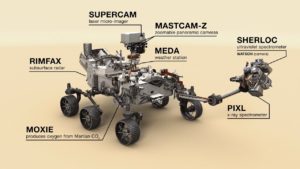
A robotic arm is a new addition to the rover ,it carries heavy science tools such as a core drill and PIXL.
The core sampling drill system will cut out cylindrical core samples from the surface and then store it in one of 42 sloth under the belly of the rover. Under the belly it has SAM(sample analysis at mars) which contains multiple tools such as a mass spectrometer, a gas chromatograph and a tunable laser spectrometer. Each looking for different signs of life on mars. The robotic arm also has an x-ray imager called PIXL that will be able to detect chemical composition and visualize the texture of the surface, and identify tiny variations in geology that would indicate that microbial life has altered the environment.
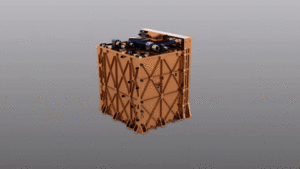
On the rear side of the rover it has a new instrument called Moxie, which is an oxygen generator device, which uses solid oxide electrolysis to break carbon dioxide from the atmosphere and produce oxygen and carbon monoxide. Moxie can produce up to 20 grams of oxygen an hour.
There is also a RIMFAX, a ground penetrating radar imager located at the lower rear of the rover, which will give visualization of the composition of geology and underground water ice up to 10 meter under the surface.
Another new technology is Meda ,which is a set of sensors that will provide measurement of temperature, wind speed, direction, pressure and relative humidity, as well as dust size and shape. This information helps scientists design shelters for astronauts living on mars.
To operate all this instrument, perseverance has multi-mission radioisotope thermoelectric generators, which use radioactive pellets to generate electricity.
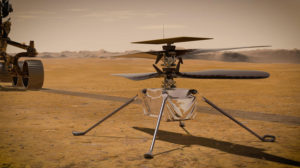
Ingenuity
Perseverance has a flying friend called Ingenuity, it is a new addiction to the rover. It is located in the belly of the rover. Ingenuity will demonstrate and set history to be the first powered flight to operate in another planet. However it will be a challenging mission as the atmosphere on mars is thinner compared to the earth, which is 99% less that earth and makes it difficult to gain lift. To counter that ingenuity weigh only about 4 pounds (1.8 kilograms) and have four specially made carbon-fiber blades, arranged into two rotors that spin in opposite directions at around 2,400 rpm, many times faster than a passenger helicopter on Earth. Touch down we are safe on Mars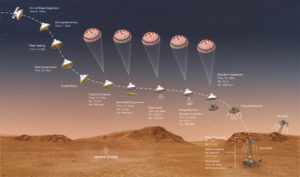
On February 18 2021 perseverance prepared to land on Mars after roughly 7 months in space. Science was excited but also scared as only 8 of 12 missions to mars had been successful. First perseverance has to go through a phrase called 7 minute of terror. In which the rover had to enter Mars’s atmosphere at 30 thousand mill per hour and touch down safely. A supersonic parachute is deployed to reduce its acceleration followed by a descent vehicle that guides the rover to it’s landing spot.
NASA is planning to land perseverance in an ancient lakebed called Jezero crater, its diameter is about 49 km and what looks like an ancient river delta feeding into the crater. Scientists are enthusiastic and believe that jezero crater one supports microbial life(microscopic organism). It’s main mission is to Explore the surface and seek for ancient life on Mars.
Actual footage of Perseverance landing on Mars
The Following Videos were used as source material when researching this article.
https://www.youtube.com/watch?v=yq
https://www.youtube.com/watch?v=95hMM2u6Fgw
